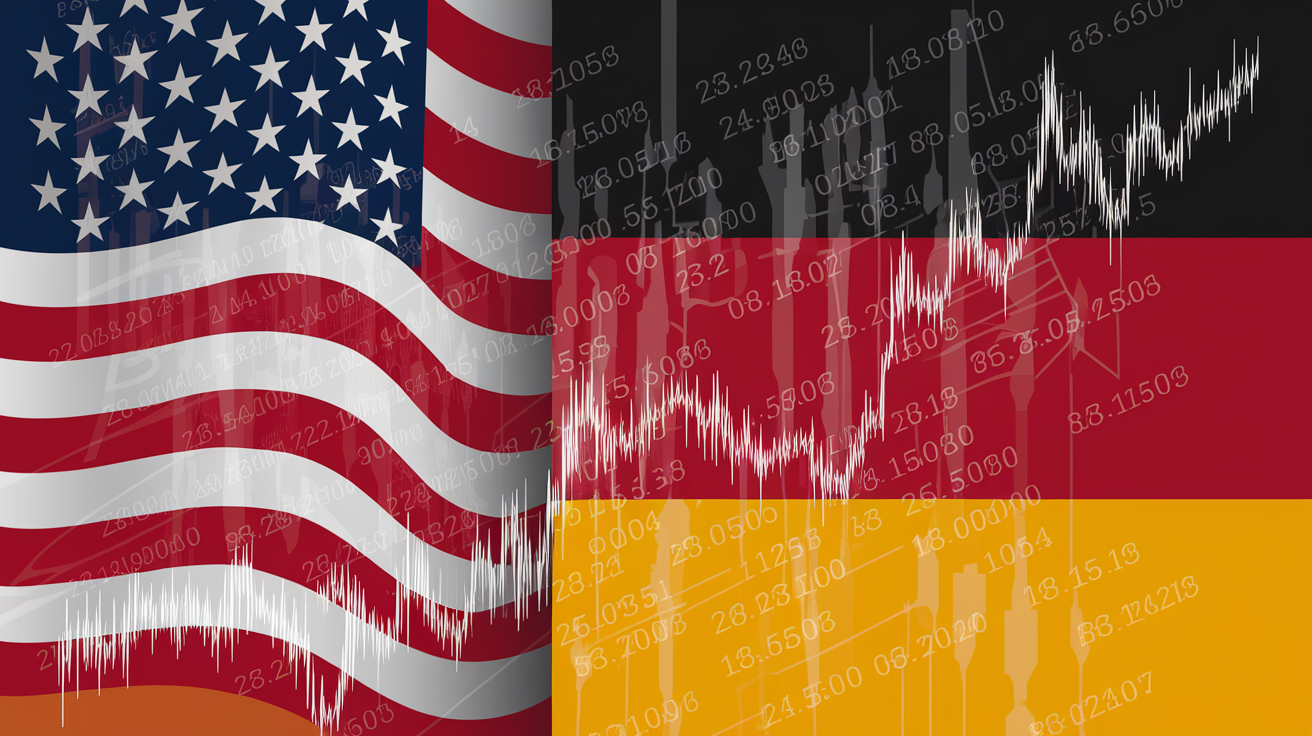Government bonds are at the heart of many investment strategies, and their yields provide insight into the economic health of a country. In the United States and Germany, government bond yields currently mirror expectations of rate reductions. While the United States displays higher yields and inflation expectations, Germany is characterized by more stable, but lower, yields. This dynamic offers investors valuable insights into how economic and monetary decisions impact bond markets. The following chapters highlight the specific influences and differences between these two economic giants.
Rate Reduction Expectations: Different Views for US Government Bonds and German Government Bonds

Expectations regarding rate reductions entail a complex web of influences on bond yields in the United States and Germany. Both countries are closely monitored for similar economic indicators, but it is the regional peculiarities of monetary and fiscal policies that decisively shape the yields.
The expectations for rate reductions in the United States are heavily influenced by the Federal Reserve. During periods of economic uncertainty or inflationary threats, the Fed tends to adjust rates to stimulate economic stability. Recently, market dynamics have recorded a contraction of the yields on 10-year US government bonds to about 4.3%. These movements reflect expectations that the Fed may reduce rates by the end of the year to counter an impending economic slowdown.
In contrast, German government bonds have shown to react to rate reductions by the European Central Bank, but their yields are further influenced by the fiscal policy of the German government. The announcement of a broad fiscal package in Germany has increased yields, as the anticipation of rising indebtedness brings with it inflationary risks and fuels the demand for additional bonds. The now increased yields, reaching about 2.9%, show a movement opposite to US trends and underline the impact of national economic measures.
These differing national reactions to rate reduction expectations not only highlight differences in economic policy strategies but also in the market psychologies of the respective regions. While in the United States, the prospect of rate cuts traditionally increases the attractiveness of bonds and reduces yields, in Germany, the combination of potential monetary incentives and fiscal measures shifts the bond dynamics. Despite the general assumption that rate reductions should curtail yields, the recent continental policy demonstrates that this cannot be seen as an isolated factor. Rather, a complex interaction is observed between national economic prospects and global economic currents that shape the bond market landscape in real time.
Economic and Monetary Influences on Bond Yields: A Comparison between USA and Germany

Economic developments and monetary policy decisions are at the center of the analysis of bond yields in the United States and Germany. These two factors interact to influence the complex networks of international financial markets. In the United States, expectations for rate reductions often serve as a dynamic driver for bond yields. The current economic situation, characterized by growth constraints and persistent inflationary threats, forces the Federal Reserve to calibrate its actions with utmost caution. A possible rate reduction is contemplated as a response to slowed growth, while persistently high inflation underscores the necessity of maintaining rates. These factors elevate risk, further influencing the yields of US government bonds.
Similarly, in Germany, planned fiscal changes play a crucial role in the evolution of yields. With an expected increase in defense spending and a potential modification of the debt brake, public spending and rules on indebtedness could become more flexible. These considerations often lead to repercussions on the yields of government bonds. The Eurozone economy, characterized by a diverse economic landscape, requires a proactive role from the European Central Bank (ECB). The possibility of adjusting the deposit rate remains under discussion to maintain economic balance.
Beyond national borders, global economic factors, such as China’s economic recovery or geopolitical tensions, determine market conditions. Such external events can increase demand for safe havens like government bonds, prompting investors to restructure their portfolios. In an uncertain environment, investors seek security through established currencies and stable bonds, which can drive prices up.
Overall, the comparison between the yields of the USA and Germany demonstrates that both economic and monetary conditions leave a profound mark on bond markets. While US government bonds offer higher yields, around 4.3%, compared to German government bonds at 2.9%, this difference also reflects the expectations and actions of their respective central banks and governments. This clarifies how intricately yield dynamics are intertwined with the macroeconomic context and policy decisions, illustrating the delicate balance between risk and return.